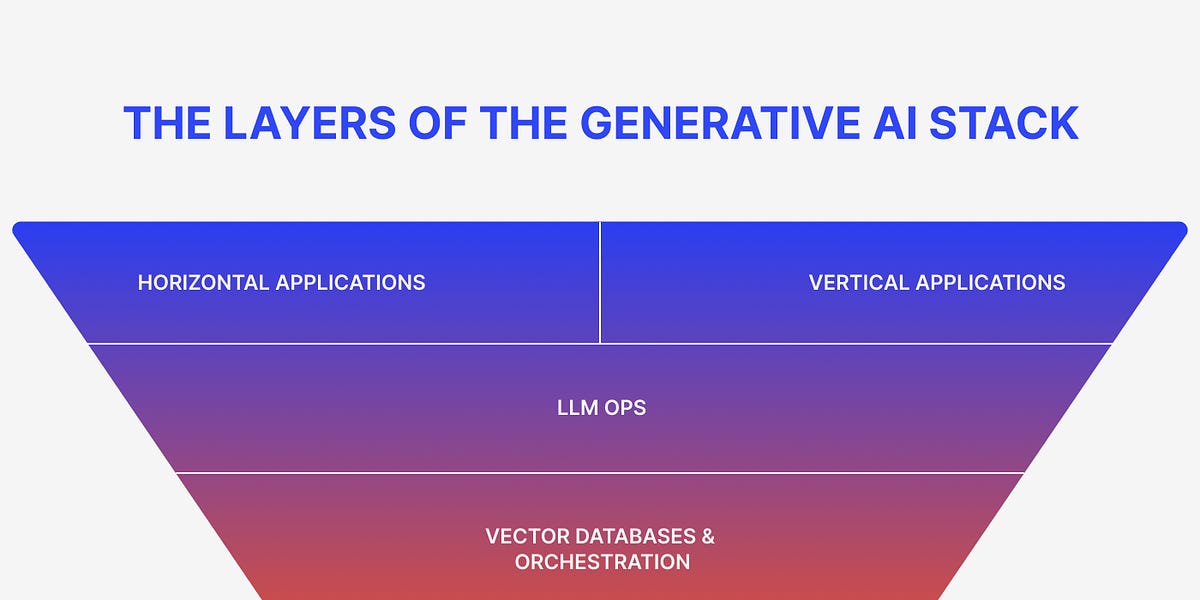How to Build a Category-Defining AI Startup

🌈 Abstract
The article discusses the rapid emergence of generative AI companies and the challenges they face in a highly competitive and fast-moving market. It emphasizes the need for a marketing-led approach to succeed in this landscape, where traditional SaaS go-to-market strategies are no longer sufficient.
🙋 Q&A
[01] The Importance of Marketing in the Generative AI Era
1. What is the role of marketing in the generative AI era, and how does it differ from traditional B2B SaaS marketing?
- In the generative AI era, marketing must take a more proactive and strategic role, rather than playing a catch-up function. Marketers need to be at the forefront, articulating the company's bold vision for the future, positioning the organization as a category leader, and educating the market on the transformative potential of this technology.
- Traditional B2B SaaS marketing often focuses on promoting a finished product once it has found early traction, but this approach won't work in the rapidly evolving generative AI landscape. Marketers in the AI space must be able to adapt to constant changes in the market, product, and user needs.
2. How can early-stage AI startups emerge amidst the noise and become category-defining leaders?
- To emerge in a hyper-competitive generative AI market, founders must embrace a marketing-led approach that focuses on:
- Defining the right market category and crafting a compelling, differentiated positioning
- Executing a multi-pronged go-to-market strategy that includes product-led growth, top-down enterprise sales, and strategic partnerships
- Shaping the industry narrative and cultivating relationships with influential stakeholders, even before the full product is ready
3. What are the key strategies that AI startups should invest in to conquer their market share and drive recognition and adoption?
- Category creation and dynamic positioning: Marketers must lead the charge in identifying the right category to target, crafting a compelling differentiated positioning, and constantly adapting it to the market's changing needs.
- Concurrent go-to-market motions: Startups need to execute a complex go-to-market strategy that includes product-led growth, top-down enterprise sales, and strategic partnerships to serve multiple segments simultaneously.
- Shaping the industry narrative: Marketers must take a bold, forward-looking stance, articulating the company's long-term roadmap and showcasing how their innovation will transform the future of AI, rather than just promoting the current product.
- Embracing a growth mindset: Marketing teams must adopt a high-velocity, risk-taking attitude, with a focus on lean operations, tight feedback loops, and concrete outcomes, across all marketing functions.
[02] Strategies for Successful Marketing-Led Generative AI Startups
1. How can AI startups leverage category creation and dynamic positioning to establish themselves as industry leaders?
- Successful AI companies will be those that can clearly define the market category they aim to enter and lead, articulating a compelling, differentiated positioning. Marketing must lead this process in lockstep with the executive team, product, and technology.
- The positioning must evolve constantly, adapting to the market's changing needs and new technological breakthroughs. By shaping the product roadmap and ensuring the positioning is maintained, marketing plays a vital role in propelling the AI company to the forefront as an industry leader.
2. What are the key components of an effective multi-pronged go-to-market strategy for generative AI startups?
- Successful market penetration for generative AI startups requires the simultaneous execution of three concurrent go-to-market motions:
- Bottom-up product-led growth (PLG) to foster brand recognition and technical credibility
- Top-down enterprise sales to drive sustainable revenue and cement credibility at the executive level
- Strategic partnerships to leverage the distribution and co-marketing muscle of larger players
3. How can AI startups shape the industry narrative and cultivate relationships with influential stakeholders?
- In this accelerated generative AI market, AI companies must shape and own the industry conversation way before their full product is ready on the market. Marketing must transcend the traditional focus on creating positioning, awareness, and demand for the product.
- Marketers need to cultivate relationships with a diverse array of influential stakeholders, such as AI policymakers, the press, research and developer communities, and government leaders, to establish the company as an industry luminary and harvest credibility beyond the product.
- This involves articulating the company's long-term roadmap and showcasing how their innovation will transform the future trajectory of AI, rather than just reacting to the current market.
4. How can AI startups embrace a growth mindset across all marketing functions?
- Successful marketing-led motions in the generative AI space will focus on extremely lean operations, velocity, tight feedback loops, and a focus on concrete outcomes. This requires teams with not just functional expertise, but a think-on-your-feet, highly resilient, persistent, and adaptable talent.
- All marketing functions, including PR & Comms, Brand, Product Marketing, Partner Marketing, and Research, must embrace the high-velocity, risk-taking attitude of growth teams, rather than just relying on traditional SaaS growth tactics.
- This distributed growth mindset allows marketing to move faster and make things happen independently of product or other team dependencies.